Poetry metadata visualization and exploration:
Hermann Hesse's case
Explore the interactive visualization: hesse.datavix.deopen in new window
This dataset is composed of 684 Herman Hesse's poems and richly annotated metadata.
PoeMetaVis allows interactive exploration of intricate associations between moods, themes, motives, and sentiments in both time and location dimension, which are otherwise invisible using traditional close reading methods.
Sankey
Hovering
Hover over a (1) mood word on the left, (2) a theme word in the center, (3) a motif word on the right, or a (4) color block at the end of each ribbon to see all associations.
Place the mouse on the image and click to magnify it.
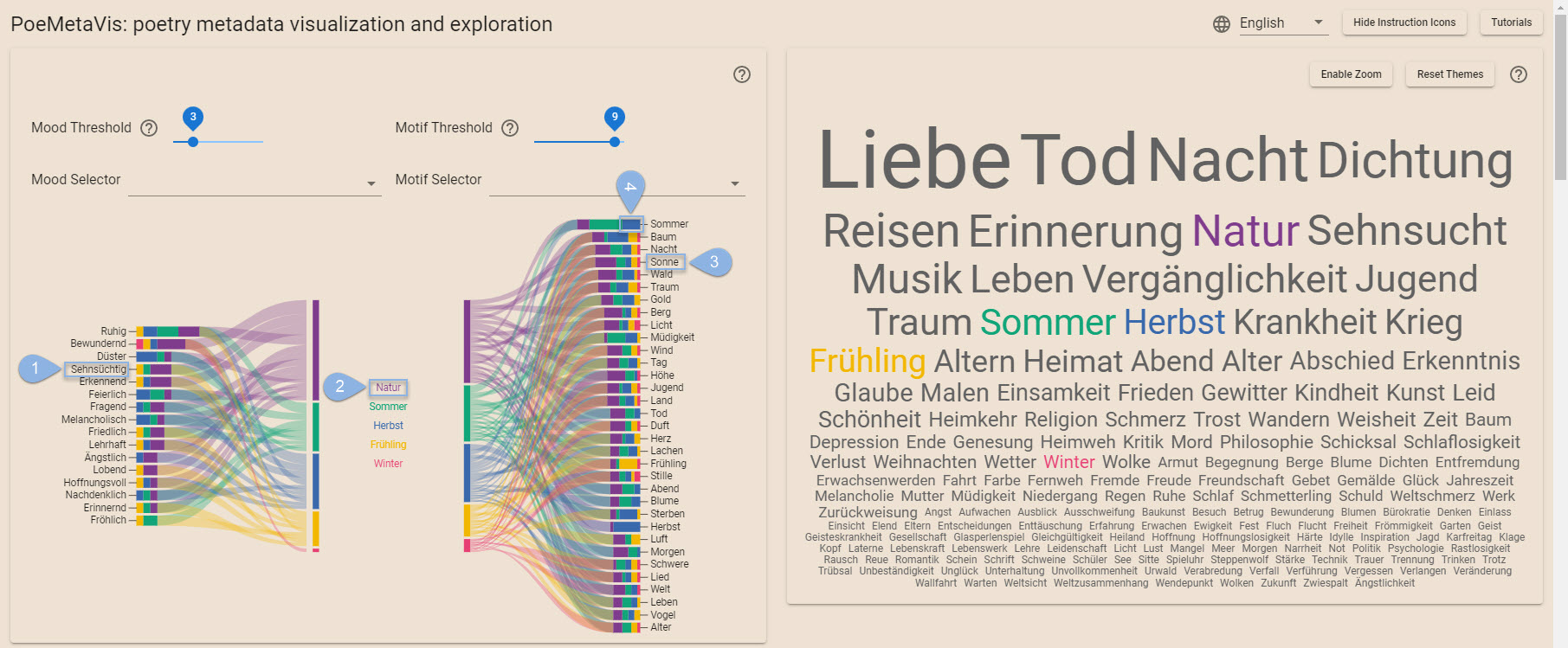
Hover over a (1) mood word on the left: 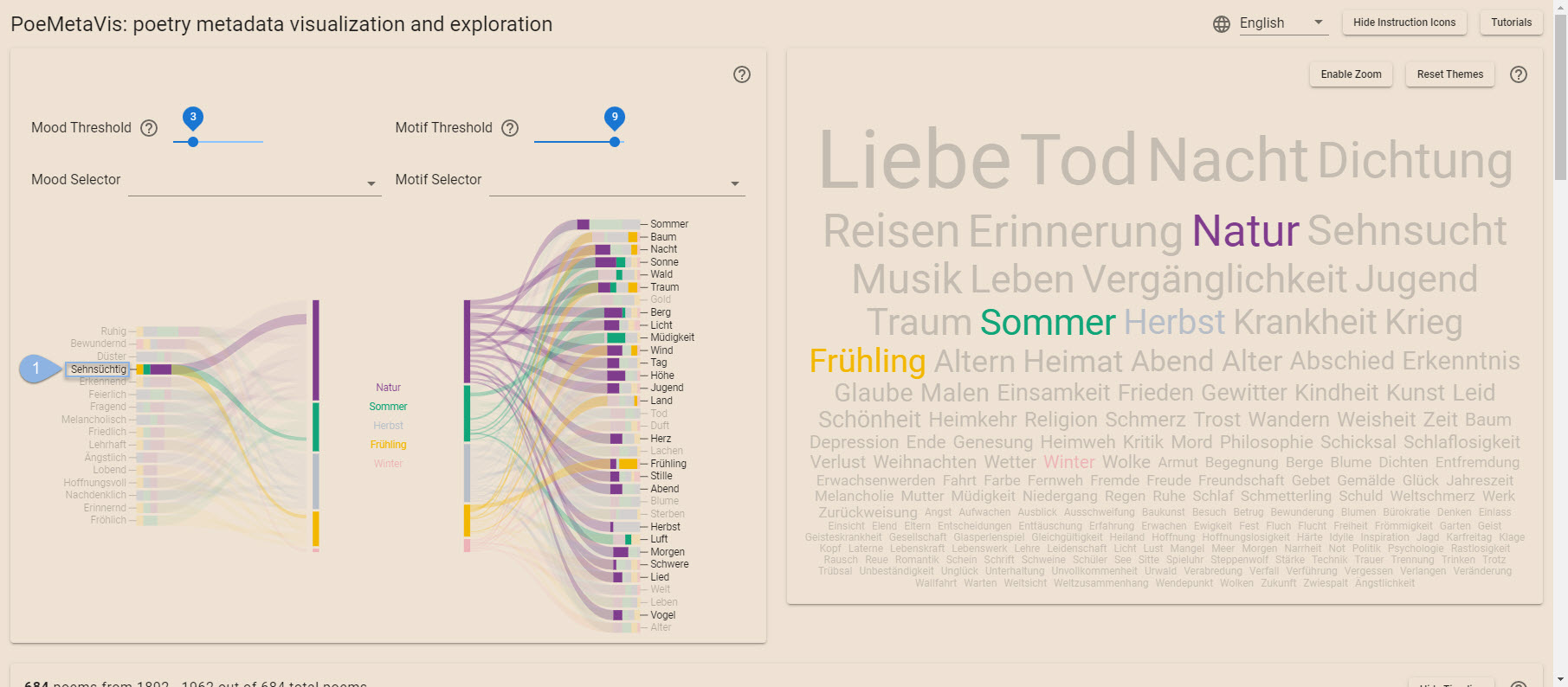
Hover over a (2) theme word in the center: 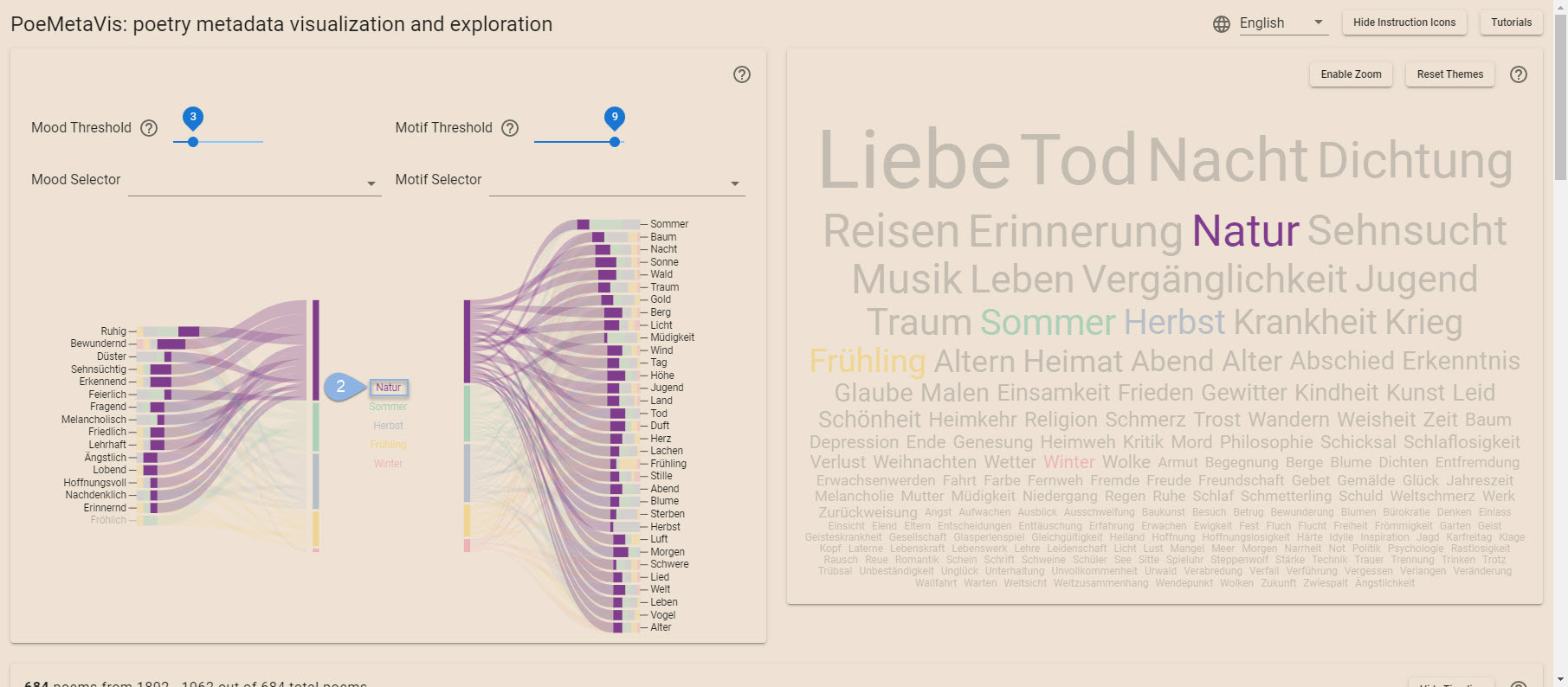
Hover over a (3) motif word on the right: 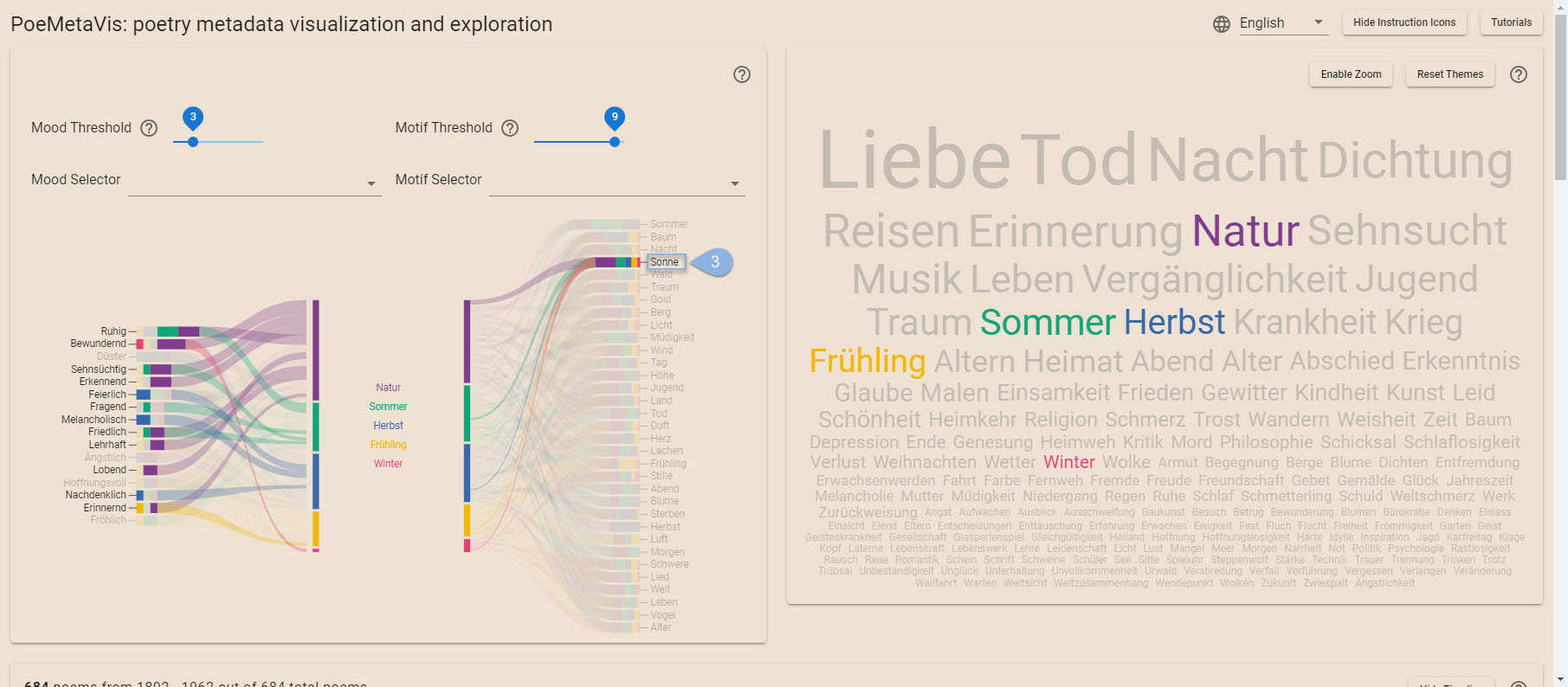
Hover over a (4) color block at the end of each ribbon: 
Clicking
Click a word or a color block to fix the highlighted associations and filter associated poems from the metadata table. 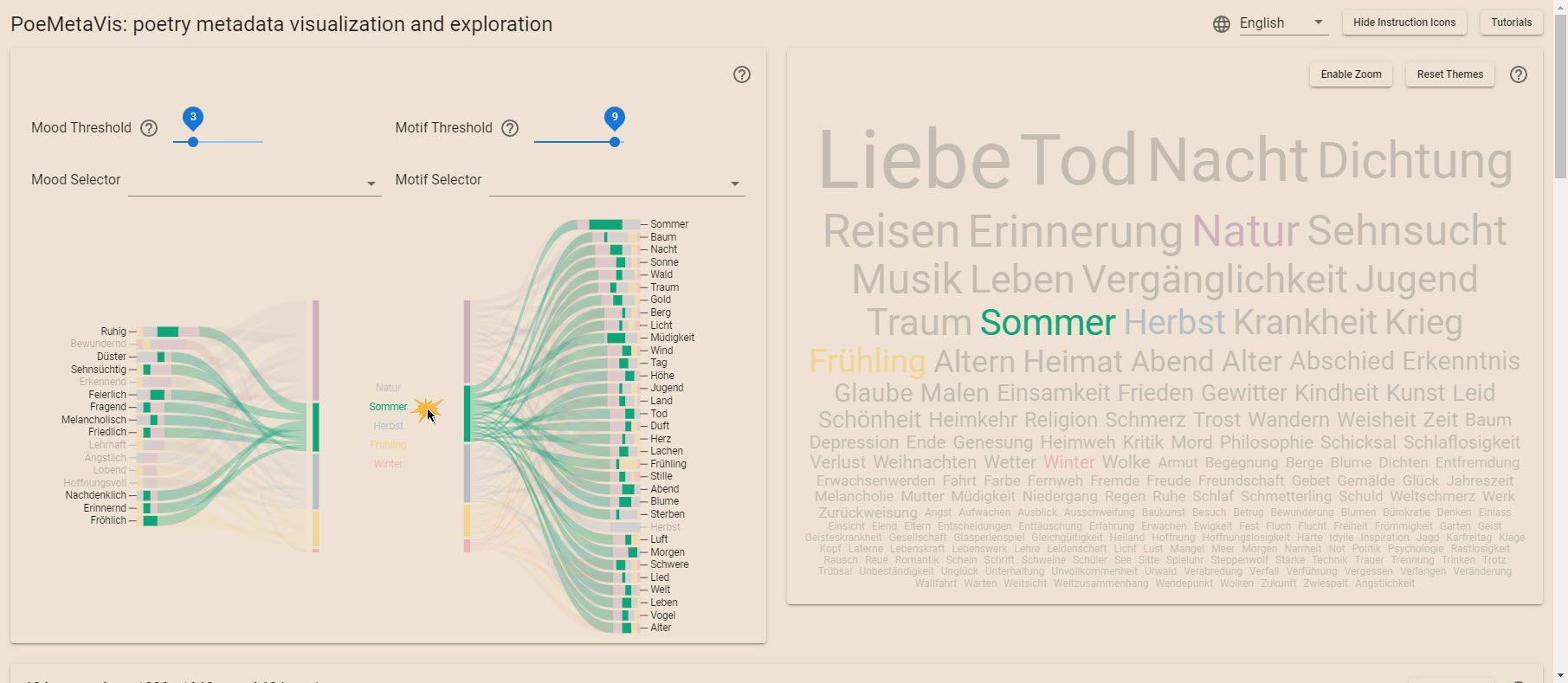
Re-click a word or a color block to fix the highlighted associations and unfilter associated poems from the metadata table.
Mood Threshold/Motif Threshold
Use the mood/motif threshold slider to show moods/motives that occur in at least N selected poems 
Mood Selector/Motif Selector
Use the mood/motif selector to display specific moods/motives and related associations 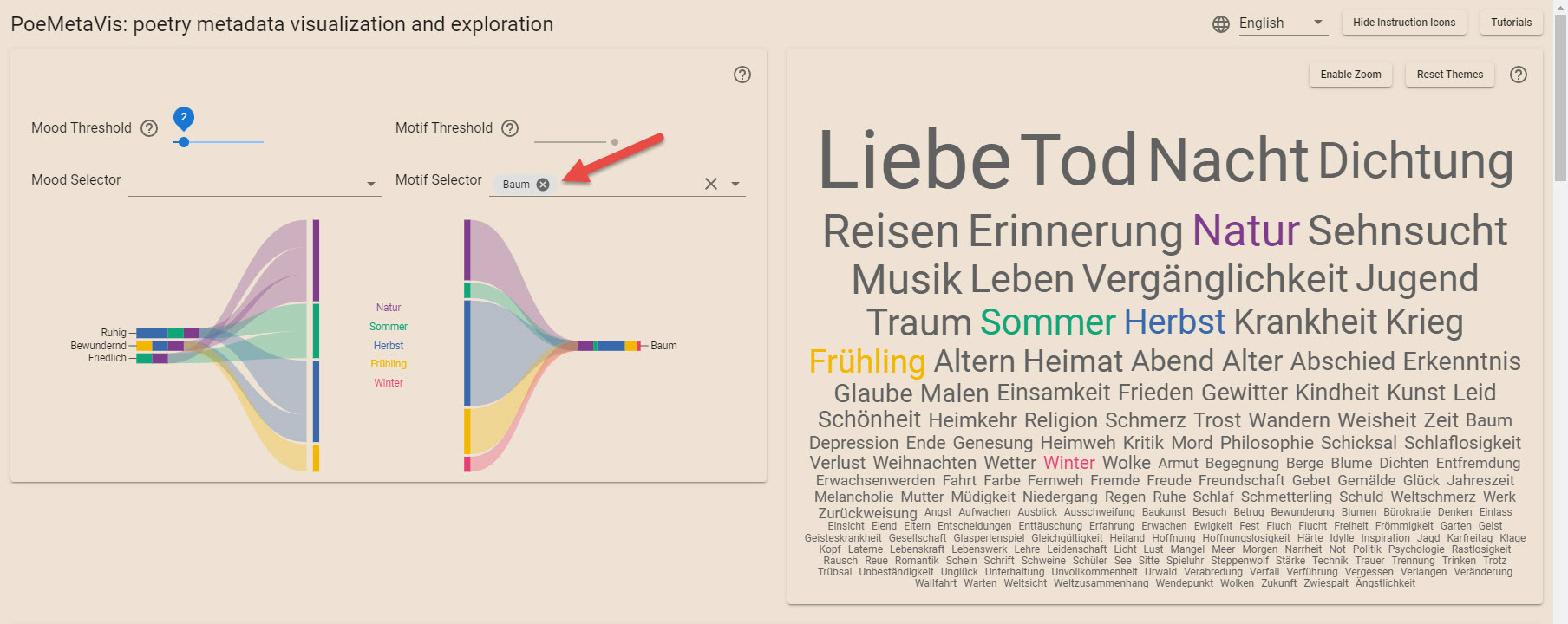
Wordcloud
Mouse-hovering
Hover over a theme word to see poems associated with that theme in the tooltip 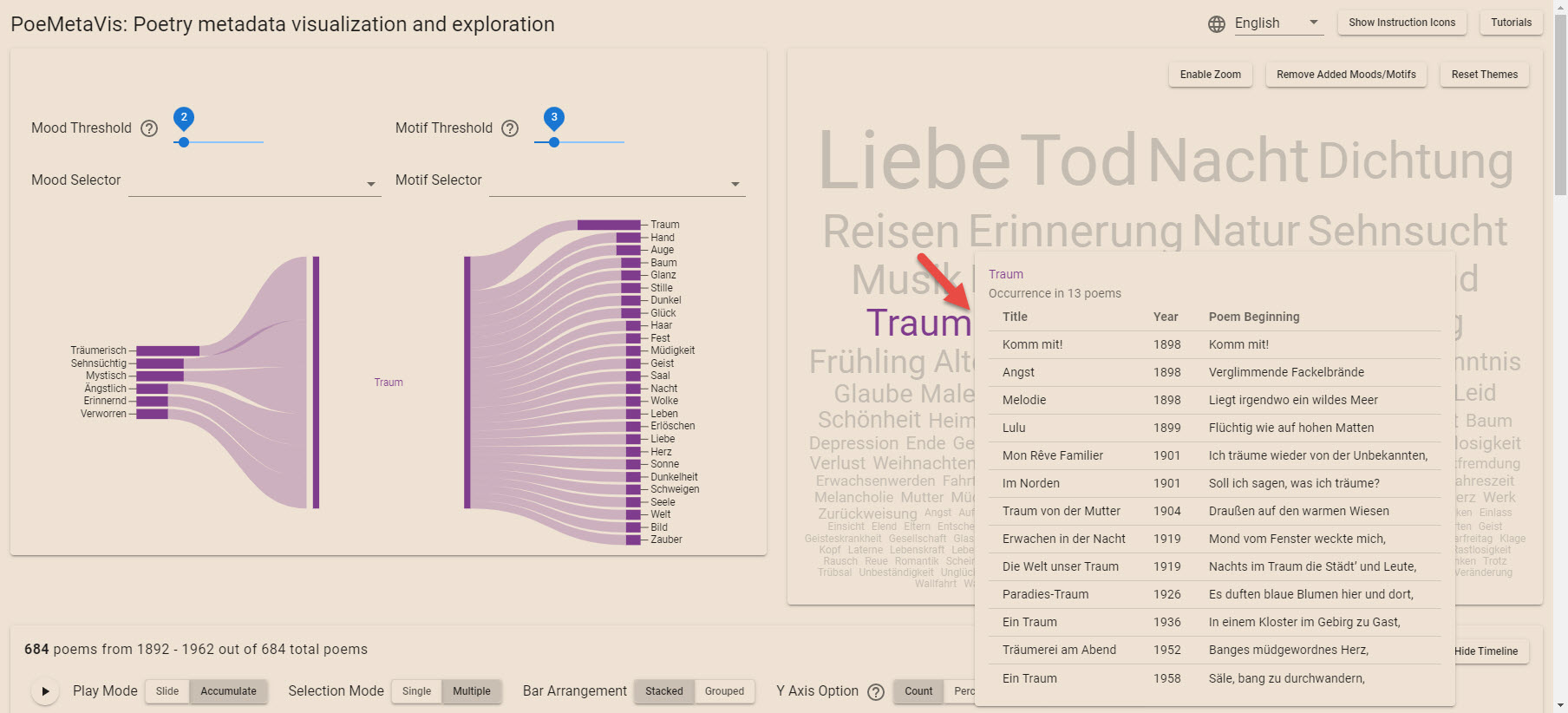
Hover over on individual poems to see associations in the Sankey chart 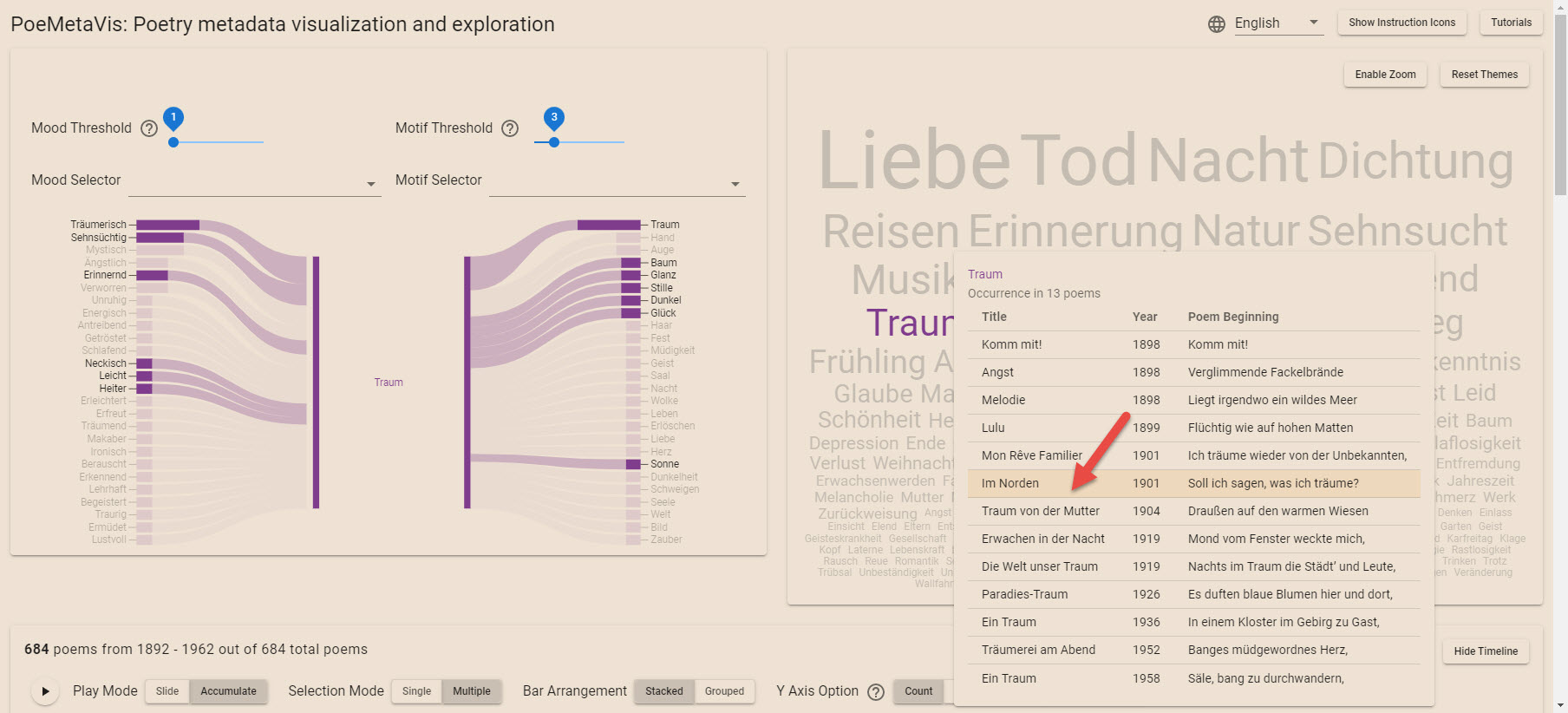
Selecting a specific poem
Click a poem inside the tooltip to add related moods and motifs to the Sankey diagram, and highlight that poem on the metadata table. Only one associated poem's moods/motifs can be added at a time.
Re-click a poem inside the tooltip to remove related moods/motifs from the Sankey diagram, and cancel the highlighted poem on the metadata table. 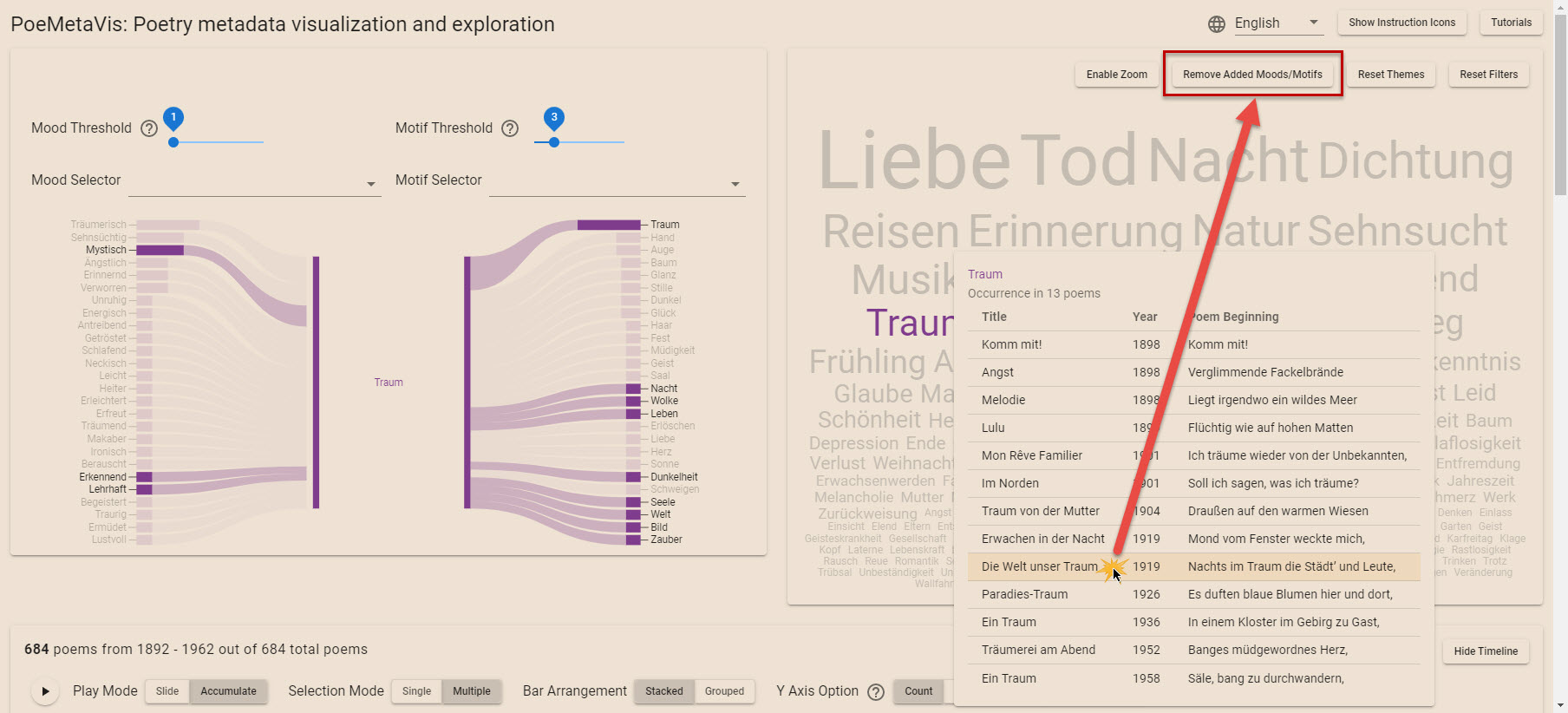
Selecting a new theme word
Click a black colored word to add that theme word to the Sankey diagram. A total of 10 theme words can be selected at a time.
Re-click a colored word to remove that theme word from the Sankey diagram. A total of 10 theme words can be selected at a time. 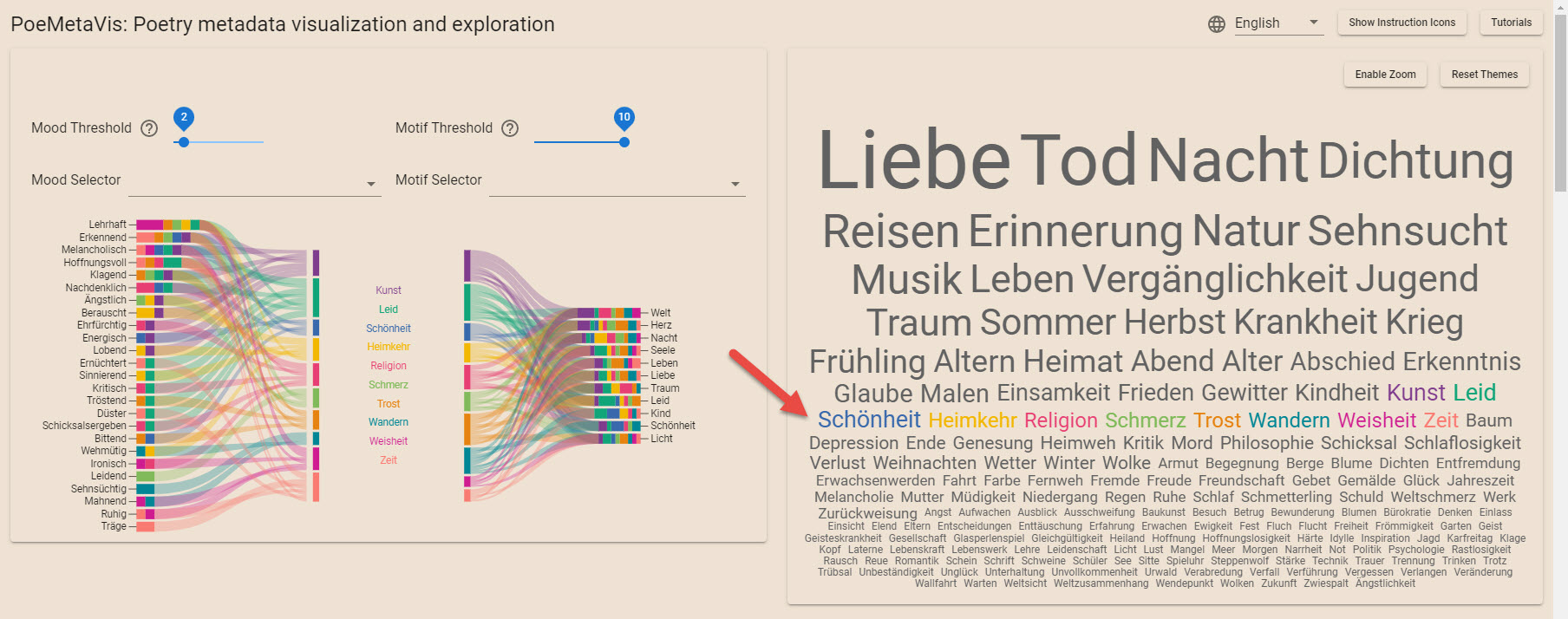
Timeline
Clicking
Click a legend item to filter the poems by one or more sentiment categories. 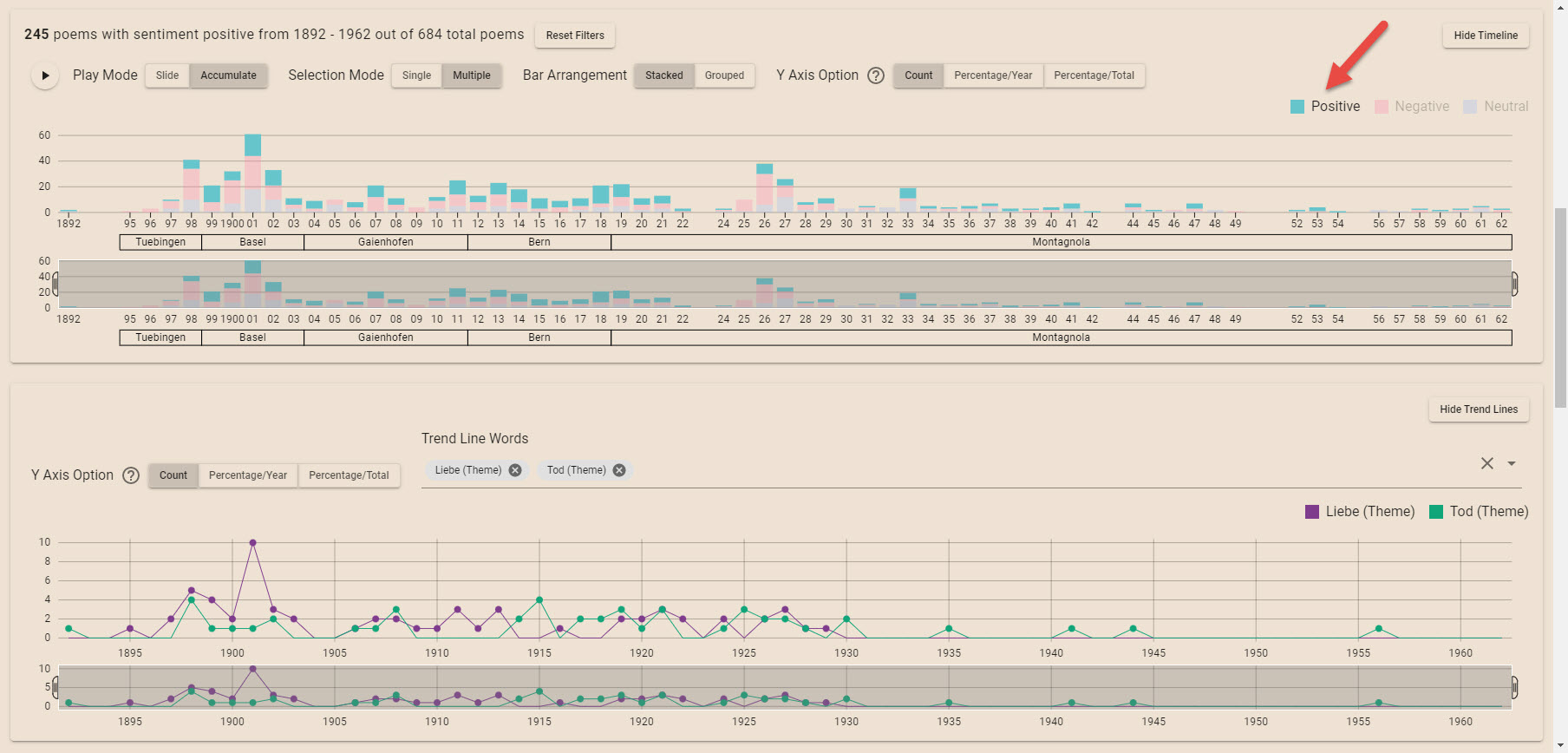
Click a year in the top graph to filter poems by that year. 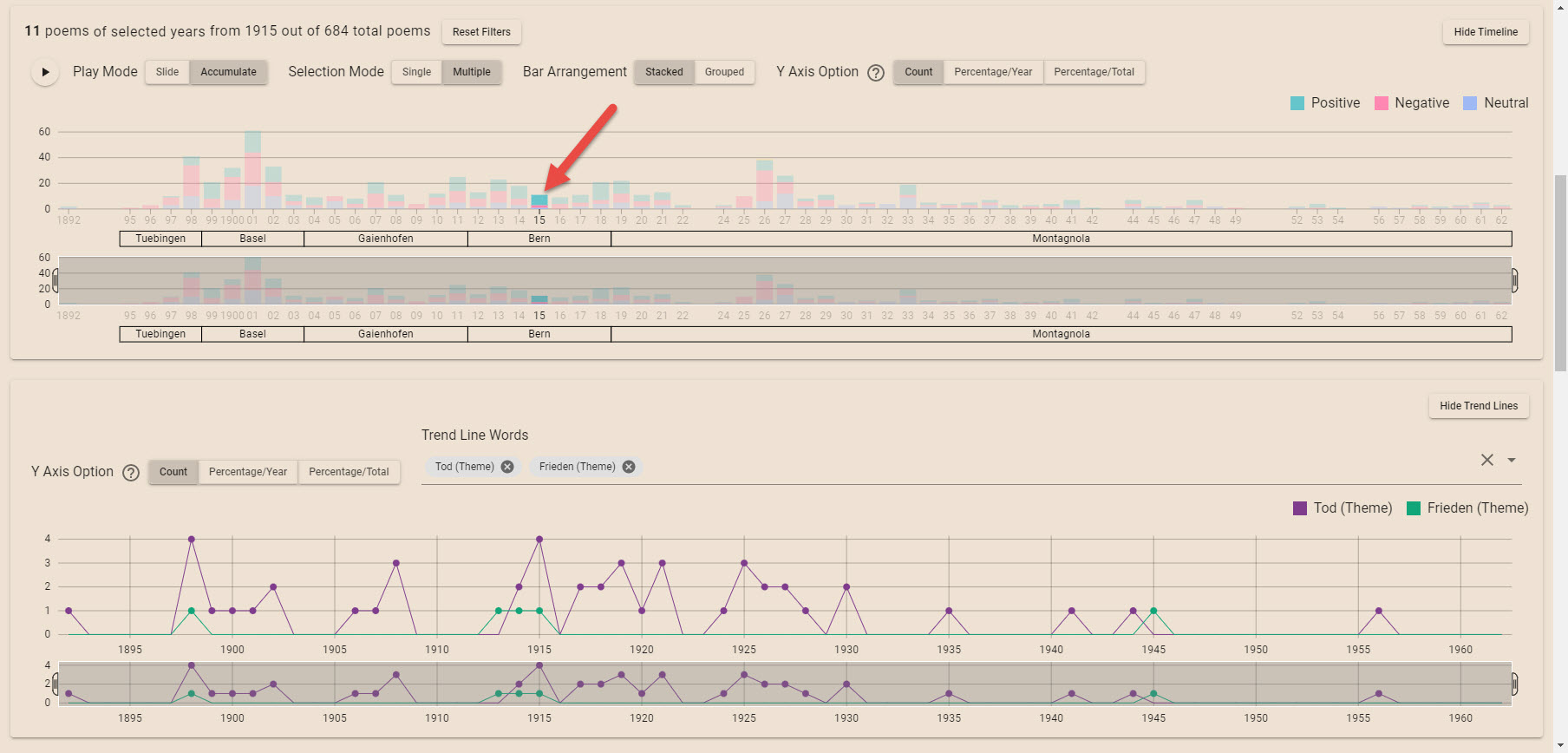
Click a colored block in the top graph to filter poems by the matching year and sentiment category. 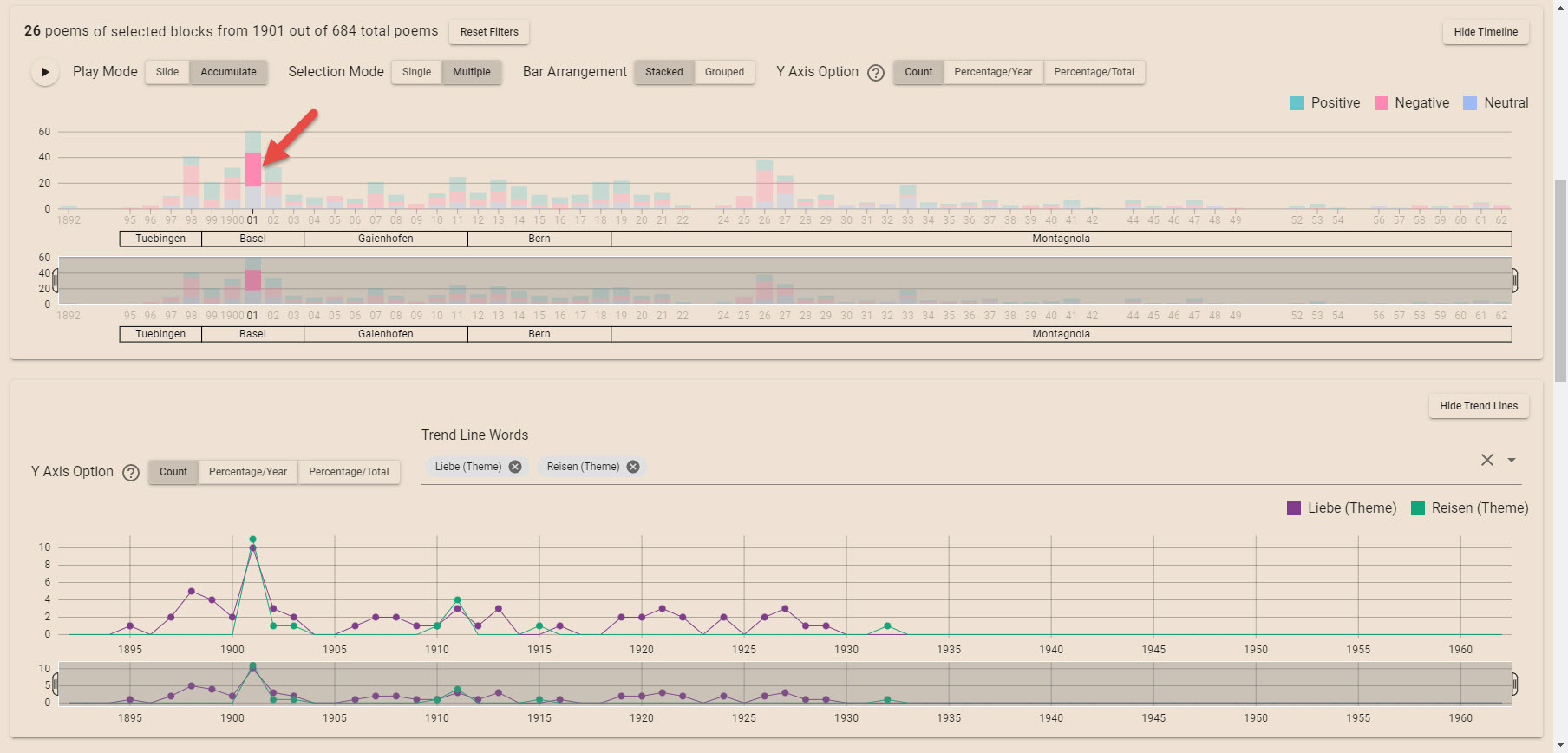
Selection Mode
Single mode: only one item can be selected at a time
Multiple mode: multiple items can be selected 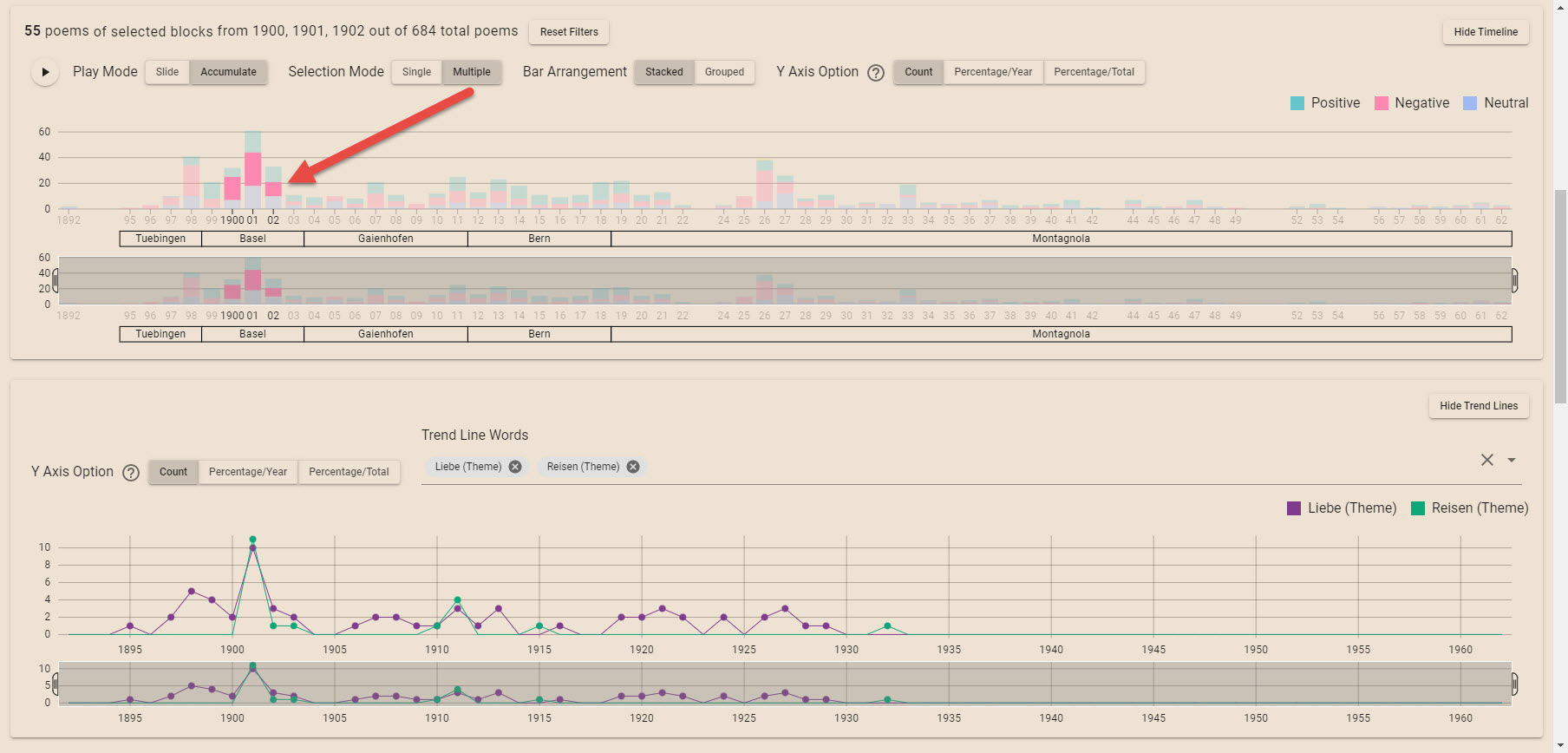
Play Mode
(Click the play button to start a time slider animation using "Slide" or "Accumulate" mode)
Slide mode: drag the handles to set the start and end years and show the changes of data over time in a fixed-sized time window
Single-year slide mode: drag the handles to select a single year and show the changes of data over time for each year in the sliding mode
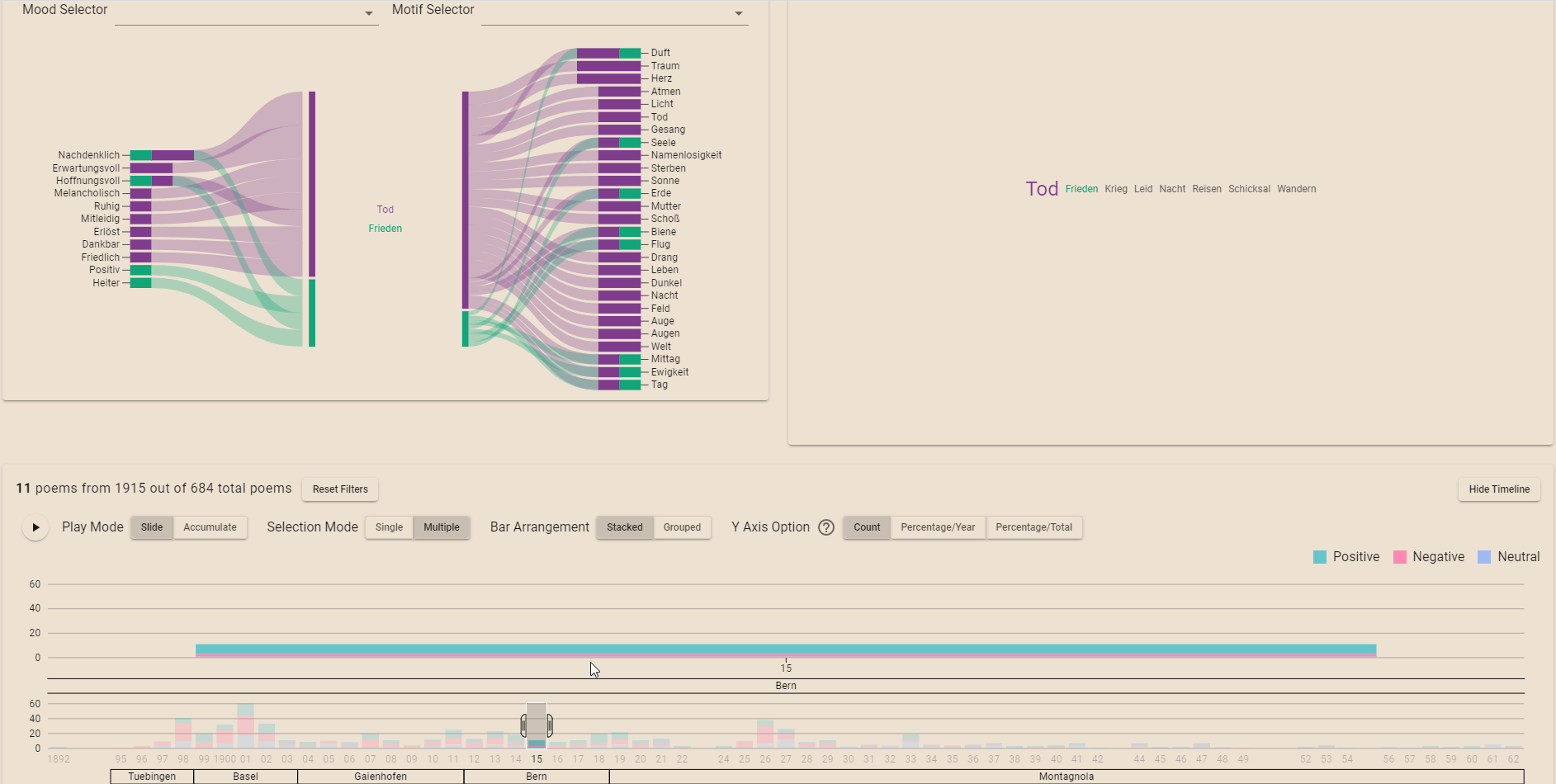
Accumulate mode: show the data over time cumulatively from a fixed start year 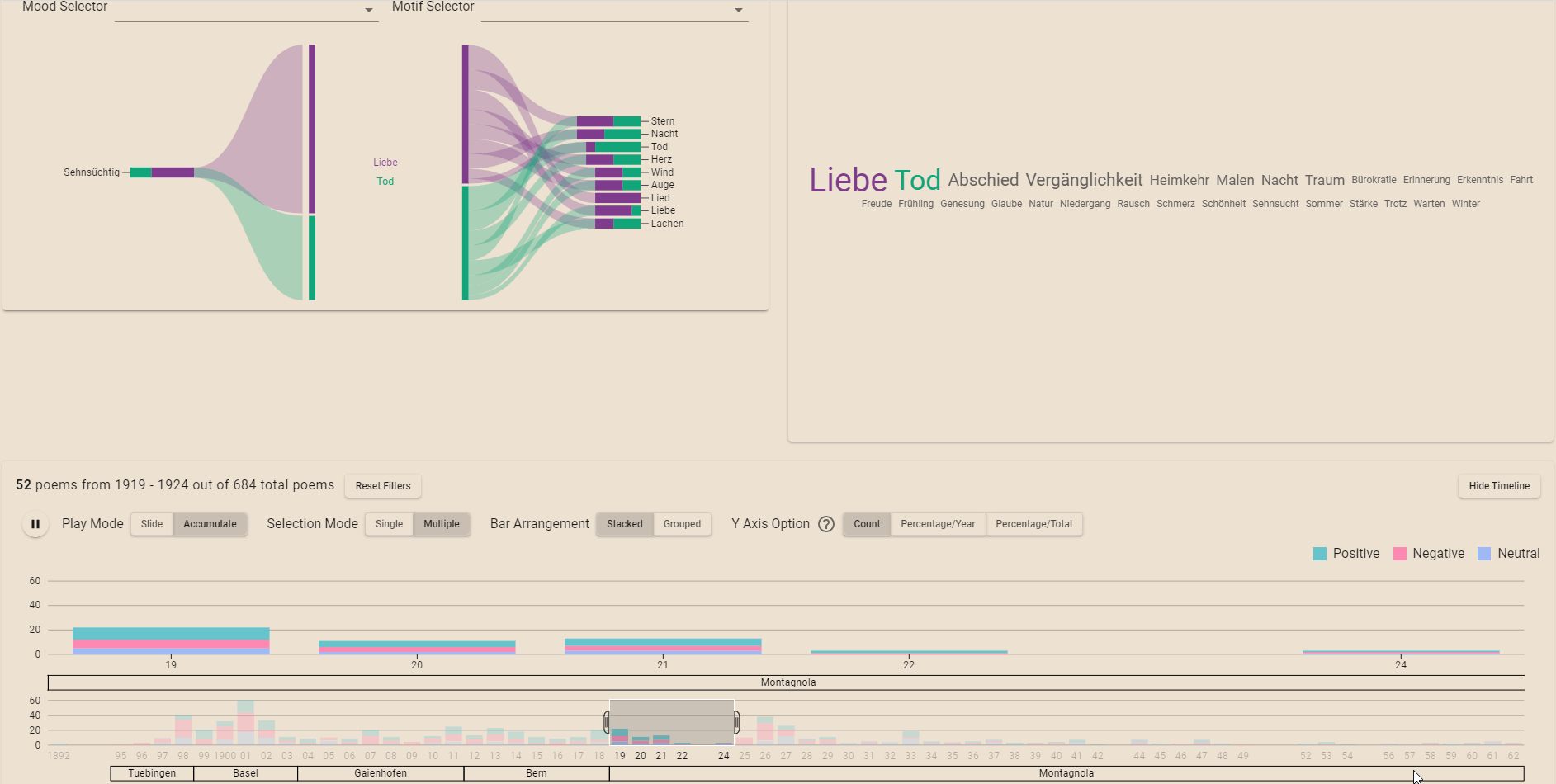
Bar Arrangement
(Option to switch between the stacked bar chart and grouped bar chart)
Stacked bar chart: sentiment categories are grouped side-by-side for each year. The entire bar height represents the sum of poems for a year. 
Grouped bar chart: sentiment categories are stacked on top of each other 

Y Axis Option
(switch between counts and percentages of the total or percentages per year)
Count: the number of poems
Percentage/Year: percentage of a sentiment category in a year 
Percentage/Total: percentage of a sentiment category in total poems 
Trends
Visualizing theme/mood/motif changes over time.
Clicking
Click the selection area to select one or more theme(s)/mood(s)/motif(motives) 
Brushing
Brush the bottom graph to display data within a specific time range.
Hovering
Hover over an item on the legend to highlight its trend line. 
Y Axis Option
(switch between counts and percentages of the total or percentages per year)
Count: the number of poems
Percentage/Year: percentage of a sentiment category in a year
Percentage/Total: percentage of a sentiment category in total poems 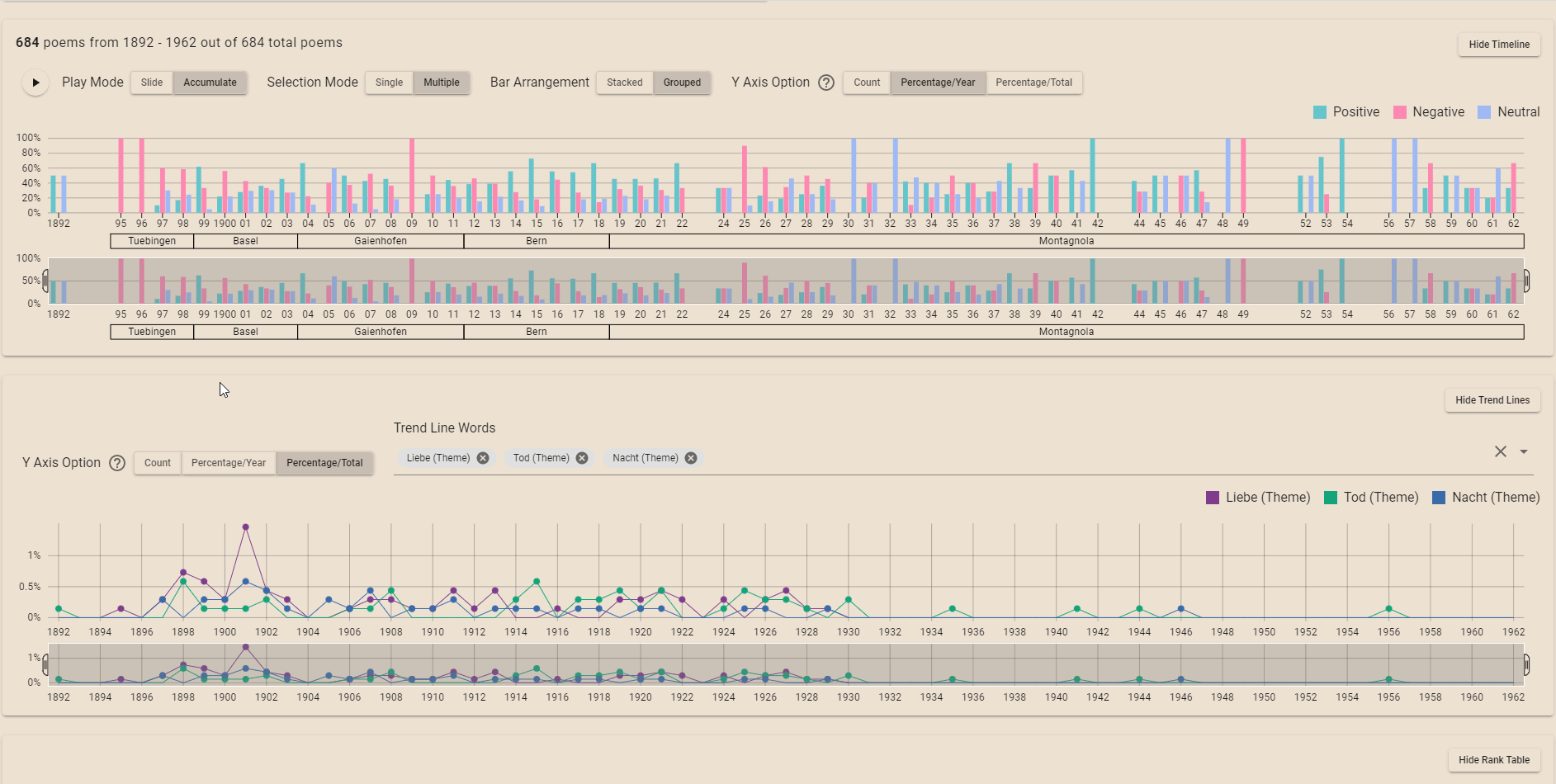
Ranking table
Inspect the ranking of mood and motif words in all poems and for specific themes selected from the wordcloud
Clicking
Click the column names on the first row to sort the table 
Searching
Search mood/motif words that contain the search item 
Metadata Table
Searching
Use the search function to filter the table. 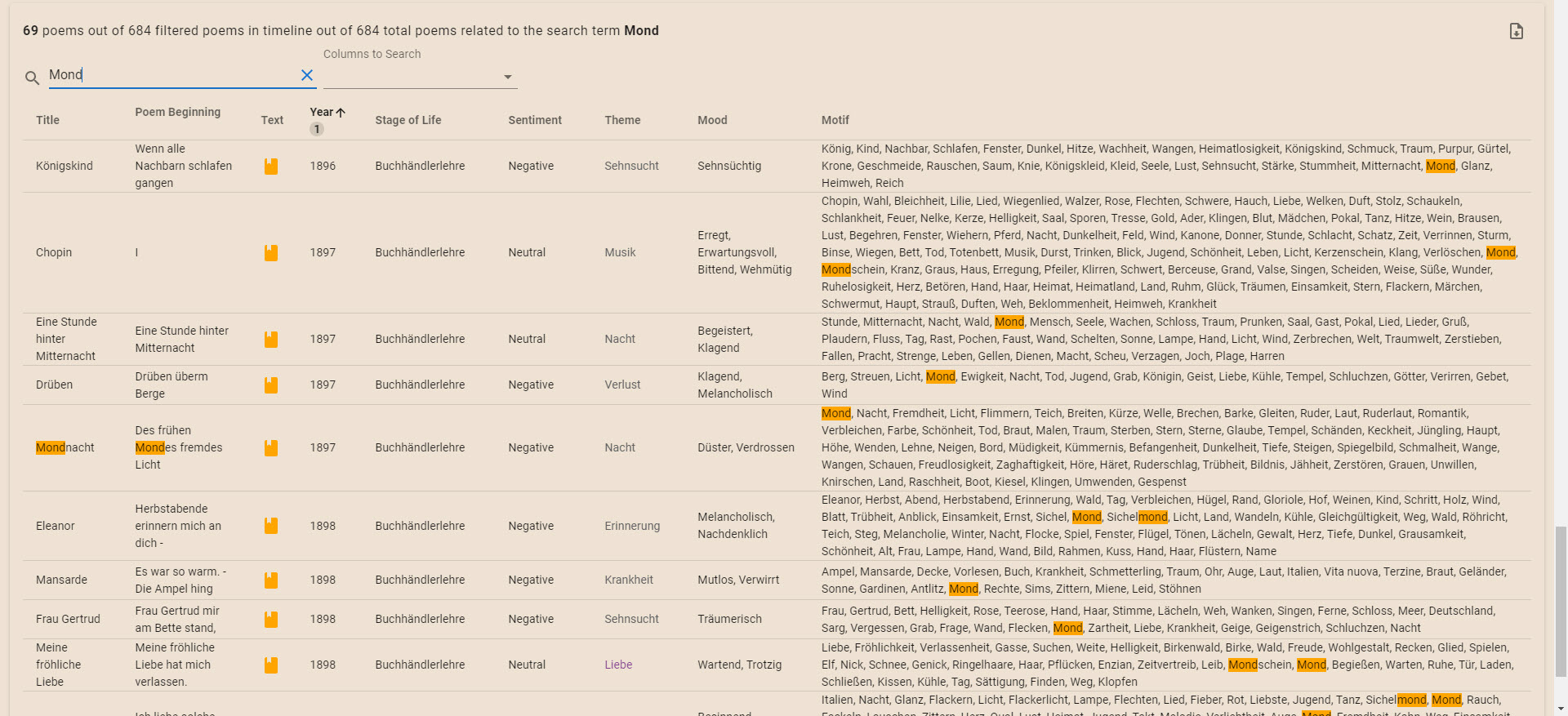
Specify search columns to narrow the search down to the selected columns. 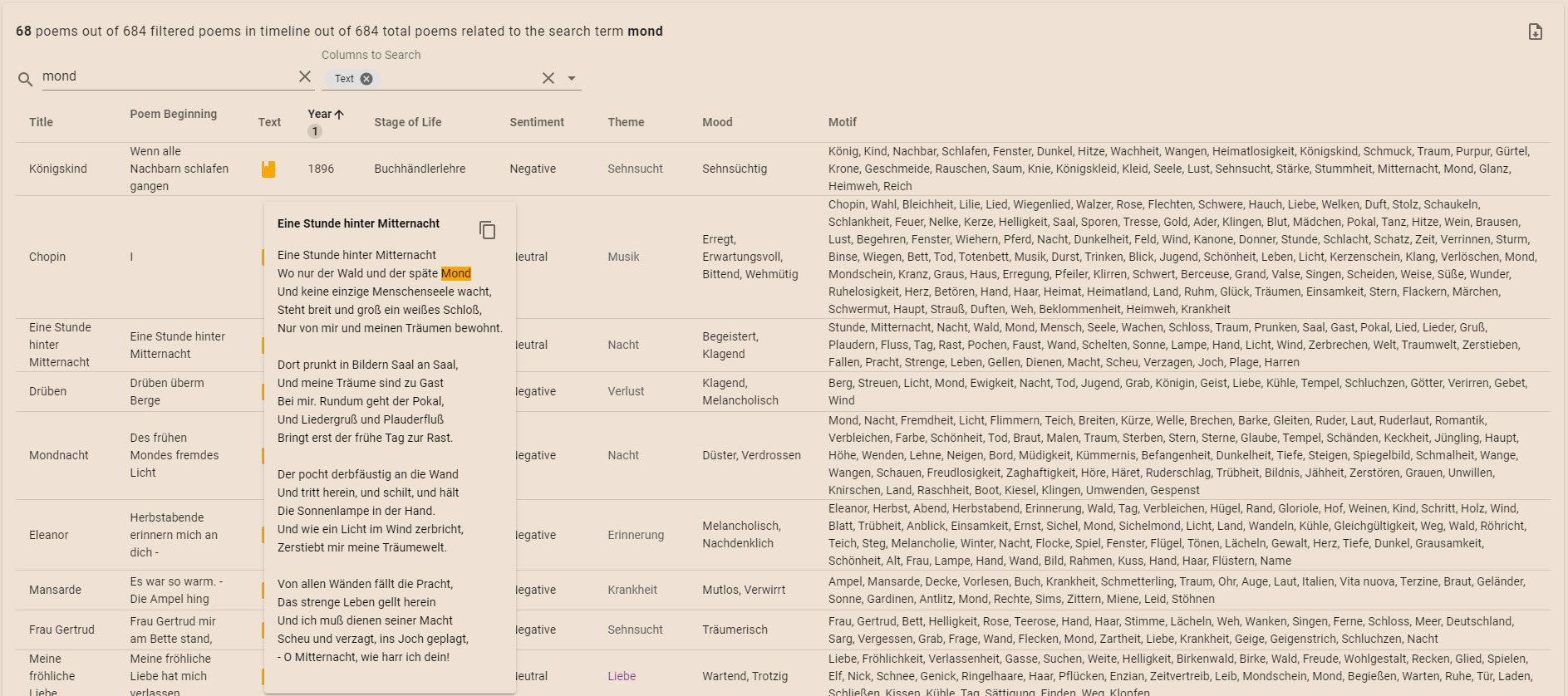
Hovering
Hover over the book icon to see the full poem text. 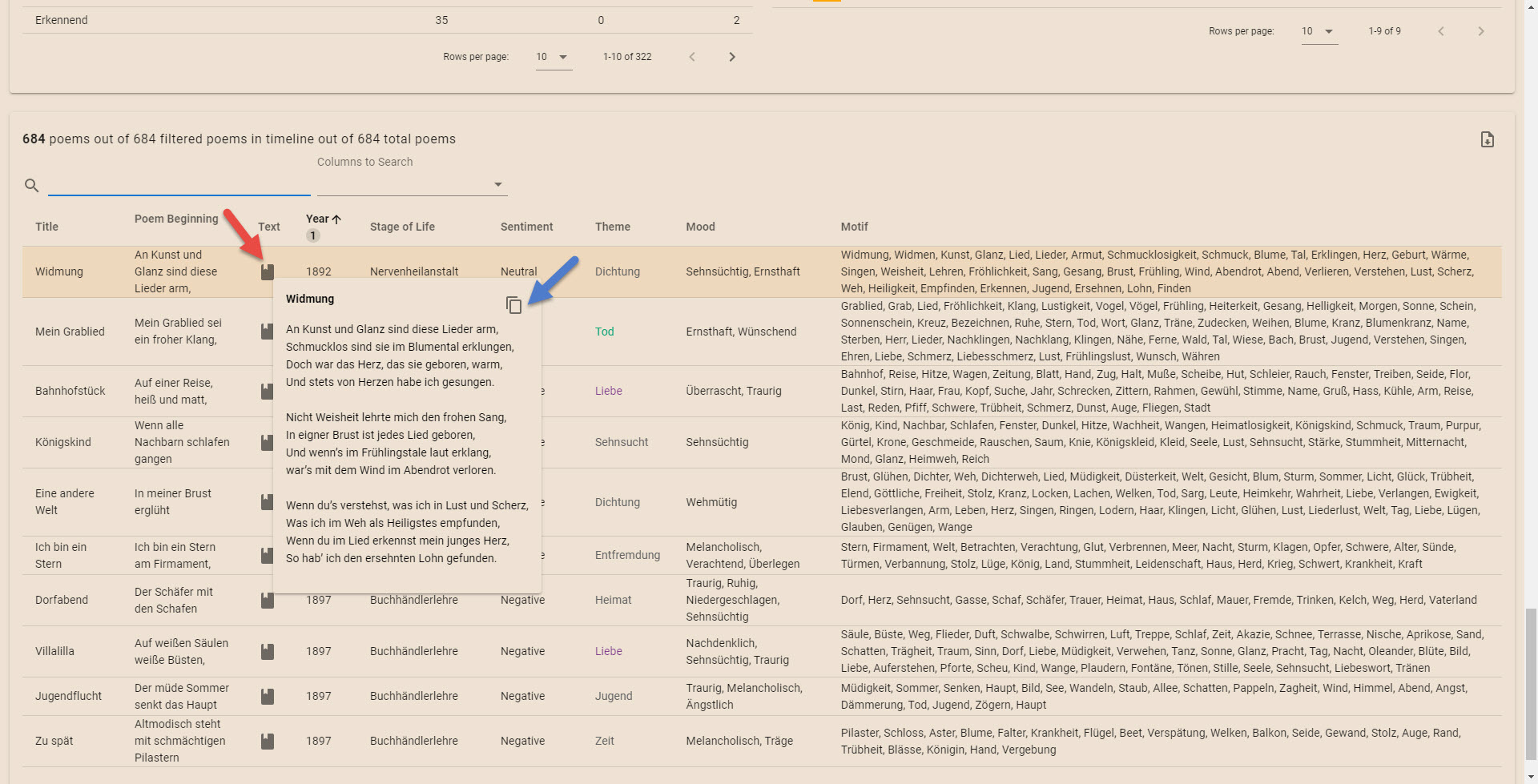
Clicking
Click the copy icon in the full poem text tooltip to copy the full poem text
Click the download button to download filtered table data.
Click a theme word to add/remove that theme word to/from the Sankey diagram.
Regeln des Annotierens (Motive)
(zusammengefasst von Julia Kammerzelt)
Motive (v.a. Substantive, Verben, Adjektive, Adverbien, Jahreszahlen, Zahlen) als Lemma (= wie es im Wörterbucheintrag steht) notieren
- Gedicht: Zauber/ durchschritt/ schnell/ jung/ gestern/ rot/ fünf/ 1936
- Annotation: Zauber/ Durchschreiten/ Schnelligkeit/ Jugend/ Gestern/ Rot/ Fünf/ 1936
Alle Motive, die als Substantiv notiert werden können, als solches notieren. Nur wenn es nicht anders möglich ist (z.B. bei Adjektiven oder Adverbien, die kein äquivalentes Substantiv haben) das Motiv mit doppelten Anführungszeichen notieren
- Gedicht: leise/ blank
- Annotation: „leise“/ „blank“
Substantive im Plural sowohl die Pluralform als auch das Lemma notieren
- Gedicht: Stunden/ Frauen
- Annotation: Stunden, Stunde/ Frauen, Frau
Bei Komposita (= zusammengesetzte Substantive) alle Komponenten sowie das gesamte Kompositum notieren
- Gedicht: Weltgeist/ Spätabendwolke
- Annotation: Weltgeist, Welt, Geist/ Spätabendwolke, Späte, Abend, Wolke
Wenn möglich Konzepte (Substantive) hinter Verben ebenfalls in dreifachen Anführungszeichen notieren
- Gedicht: schlief/ beschützen/ gesundet/ gesungen/ glänzte
- Annotation: Schlafen, '''Schlaf'''/ Beschützen, '''Schutz'''/ Gesunden, '''Gesundheit'''/ Singen, '''Gesang'''/ Glänzen, '''Glanz'''
Bei zusammengesetzten Adjektiven ohne Substantiviertes Äquivalent (ähnlich wie bei Komposita) alle Komponenten sowie das gesamte Adjektiv in doppelten Anführungszeichen notieren
- Gedicht: fieberheiß
- Annotation: „fieberheiß“, Fieber, Hitze
Anderssprachige Ausdrücke als Lemma in doppelten Anführungszeichen und deutsche Übersetzung als Lemma in dreifachen Anführungszeichen notieren
- Gedicht: giovenezza/ si fugge
- Annotation: „giovenezza“, '''Jugend'''/ „fuggire“, '''Fliehen'''
Poetisch umschriebene Motive sowohl wie im Gedicht als auch das Motiv dahinter in dreifachen Anführungszeichen notieren
- Gedicht: Flockenspiel/ Reiselast
- Annotation: Flockenspiel, Flocke, Spiel, '''Schnee'''/ Reiselast, Reise, Last, '''Gepäck'''
Diminutive mit entsprechendem Lemma notieren
- Gedicht: Ämplein/ Kindchen
- Annotation: Ämplein, Ampel/ Kindchen, Kind
Bei Substantivierungen reicht es aus, nur diese ohne Konzept dahinter zu notieren
- Gedicht: Müdesein, Verlorenes, Schöne, Fragender
- Annotation: Müdesein, Verlorenes, Schöne, Fragender
© copyright 2021 - 2025 Wei Ding. All rights reserved.